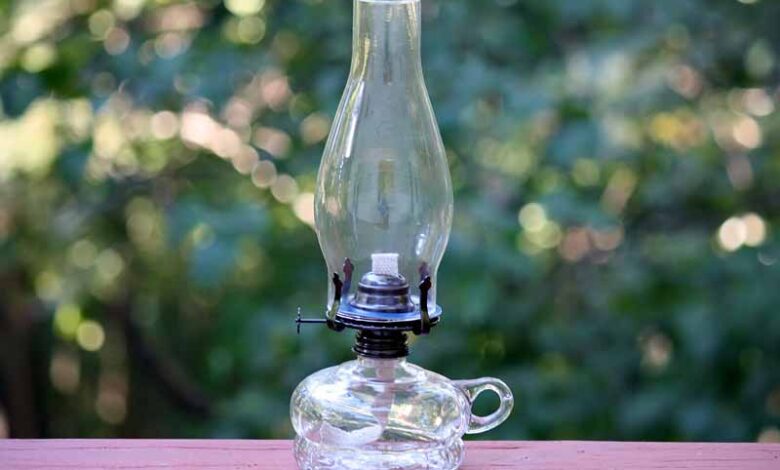Antique Oil Lamps: Illuminating History and Elegance

Antique oil lamp hold a special place in the realm of historical artifacts and decorative collectibles. From their humble beginnings as simple vessels for providing light to their status as sought-after treasures for collectors, these lamps embody both functionality and aesthetic appeal. Let’s embark on a journey to explore the rich history, intricate designs, and enduring allure of antique oil lamps.
1. Introduction
The flickering glow of an oil lamp evokes images of bygone eras, where these lamps were the primary source of illumination in homes, streets, and businesses. Dating back to ancient times, oil lamps have been used across various civilizations, each leaving behind a unique imprint on their design and construction. Today, antique oil lamp serve as tangible links to our past, offering glimpses into the daily lives and artistic expressions of those who came before us.
2. Types of Antique Oil Lamp
Early Oil Lamp Designs
Ancient civilizations such as the Egyptians, Greeks, and Romans were among the earliest to utilize oil lamps, often crafted from materials like clay or bronze. These early designs featured simple shapes with functional spouts for holding wicks and reservoirs for storing oil.
Evolution of Oil Lamps Through Different Eras
As civilization progressed, so too did the sophistication of oil lamp designs. During the Middle Ages and Renaissance period, oil lamps became more ornate, featuring intricate patterns and decorative motifs. The Industrial Revolution ushered in mass production techniques, leading to a proliferation of oil lamp styles across different social classes.
Regional Variations in Oil Lamp Designs
From the elegant brass lamps of Europe to the intricately carved wooden lamps of Asia, each region has contributed its own distinct style to the world of antique oil lamp. Cultural influences, local materials, and craftsmanship techniques have all played a role in shaping these diverse designs.
3. Materials Used in Antique Oil Lamp
Common Materials Used in Construction
Antique oil lamp were crafted from a variety of materials, including brass, copper, glass, ceramic, and even precious metals like silver and gold. Each material imparted its own unique characteristics to the lamp, influencing both its appearance and durability.
Notable Craftsmanship and Design Elements
Artisans skilled in metalwork, glassblowing, and ceramics employed intricate techniques to create elaborate designs on oil lamps. From embossed patterns to hand-painted decorations, these craftsmanship details add to the charm and value of antique oil lamp.
4. Collecting Antique Oil Lamp
Tips for Identifying Authentic Antique Oil Lamp
Authenticating antique oil lamp requires a keen eye for detail and a thorough understanding of historical styles and manufacturing methods. Look for telltale signs of age, such as patina, wear patterns, and craftsmanship inconsistencies.
Where to Find Antique Oil Lamp
Antique shops, flea markets, estate sales, and online auctions are popular venues for acquiring antique oil lamps. Additionally, specialized antique dealers and collectors’ clubs offer opportunities to network with fellow enthusiasts and source rare pieces.
Factors Influencing the Value of Antique Oil Lamps
The rarity, condition, provenance, and demand for a particular lamp all play significant roles in determining its market value. Factors such as manufacturer, historical significance, and aesthetic appeal can also impact the desirability and price of an antique oil lamp.
5. Maintenance and Care of Antique Oil Lamps
Cleaning and Preserving Antique Oil Lamps
Proper maintenance is essential for preserving the beauty and functionality of antique oil lamps. Use gentle cleaning techniques and appropriate cleaning solutions to remove dirt and grime without damaging delicate surfaces. Periodic inspections and routine maintenance ensure that lamps remain in optimal condition for years to come.
Ensuring Proper Functionality
Before lighting an antique oil lamp, inspect the wick, burner, and reservoir for any signs of damage or wear. Use high-quality lamp oil and adjust the wick height as needed to achieve a steady flame. Avoid exposing antique oil lamps to extreme temperatures or harsh chemicals, as these can cause irreparable damage.
6. Decorative Uses of Antique Oil Lamps
Incorporating Antique Oil Lamps into Home Décor
Antique oil lamps add a touch of vintage charm to any interior space, whether displayed individually as focal points or grouped together for a cohesive aesthetic. Pair them with period furnishings or juxtapose them against modern décor for an eclectic look that celebrates the past and present.
Showcasing Antique Oil Lamps as Historical Artifacts
Beyond their decorative appeal, antique oil lamps serve as tangible reminders of our collective heritage. Displayed in museums, historical societies, and private collections, these lamps offer valuable insights into the social, cultural, and technological advancements of past civilizations.
7. Popular Antique Oil Lamp Styles
Aladdin Lamps
Renowned for their exceptional brightness and patented design features, Aladdin lamps represent a pinnacle of innovation in the world of oil lighting. With their distinctive mantle burners and efficient fuel consumption, Aladdin lamps remain highly sought after by collectors and enthusiasts alike.
Victorian Oil Lamps
Exemplifying the opulence and elegance of the Victorian era, Victorian oil lamps feature elaborate glass shades, decorative brass fittings, and intricate bases adorned